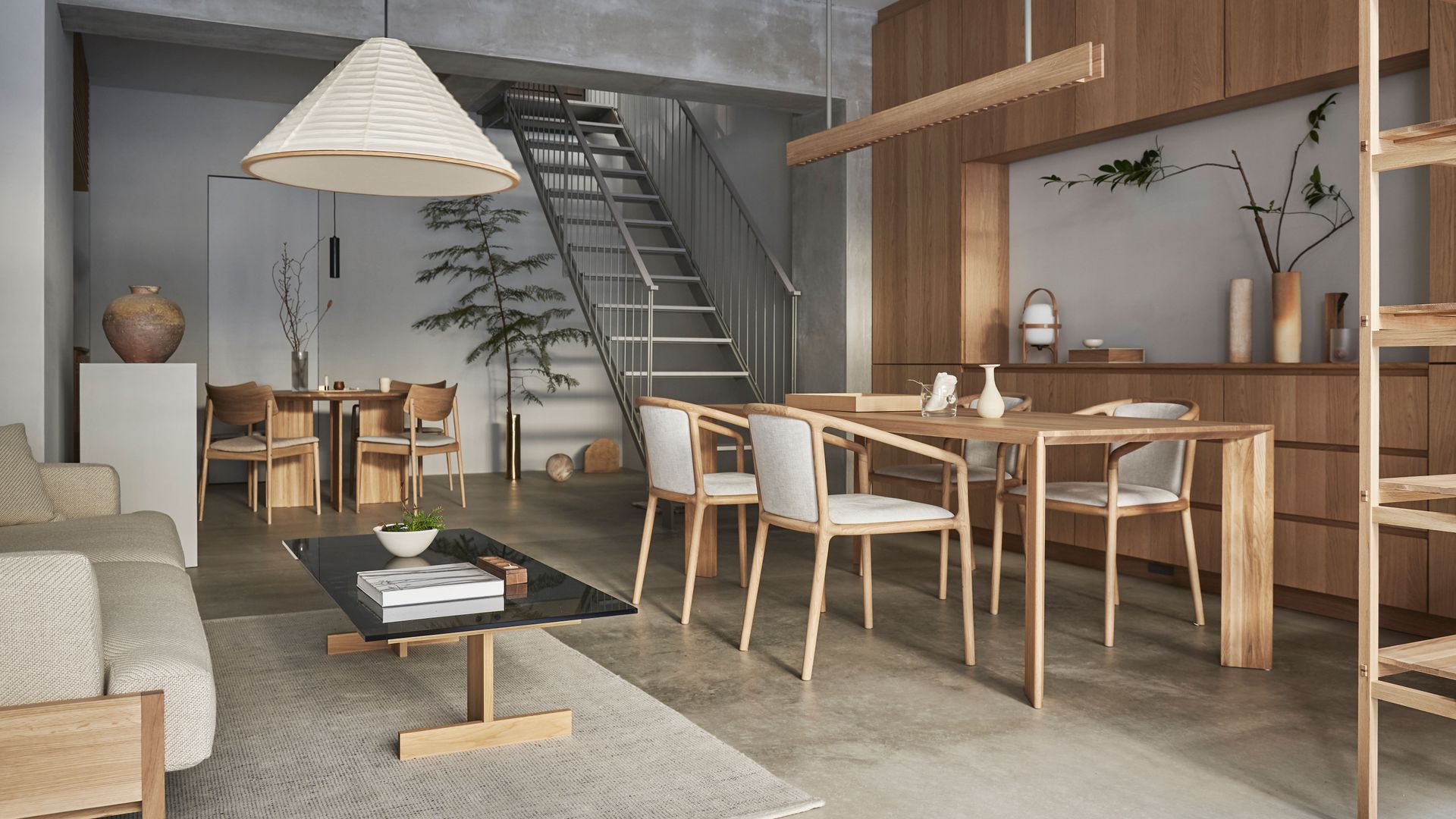
Karimoku Commons Kyoto is designed as an intimate home
It is a traditional mesh of previous and new Kyoto. Picture a tall, slender façade of clear-lined vertical darkish oak slats, minimalist eaves overhanging the avenue, a basic linen noren curtain and a crafted sweep of washed gravel floor flowing into the warmly lit inside.
This is the scene that greets website visitors arriving at Karimoku Commons Kyoto – the 1st Kyoto flagship for Karimoku Furnishings Inc, the acclaimed Japanese wooden furnishings manufacturer (also known for its Karimoku Circumstance Study series of areas, such as the latest Hiroo Residence in Tokyo and Foster Retreat in Martha’s Vineyard).
Karimoku Commons Kyoto:
(Image credit rating: Tomooki Kengaku)
The new setting up, by Keiji Ashizawa Style, blends in quietly to Anekoji Dori, a slender road in the central Nakagyo-ku district, where by it sits on the site of a previous wood machiya, or townhouse.
Designed to evoke the personal atmosphere of a property, the new Karimoku Commons Kyoto space filters the standard characteristics of a machiya by way of a clean-lined present-day style and design prism. This is reflected in the minimalist strains of its dim wood latticed façade, narrow frontage, deep format and heat inside palette of in-involving colours.
‘Although the making was newly constructed, we wished to generate a room with the environment of a Kyoto machiya, distinctive from the Karimoku Commons area in Tokyo,’ Keiji Ashizawa – who also developed its sister area in Tokyo, which opened in 2021 – tells Wallpaper*.
(Picture credit history: Tomooki Kengaku)
The new area aims to supply the chance for visitors to intimately experience the creations of Karimoku – freely striving out its distinct household furniture brands and exploring at 1st hand the crossover of style and design and operate, when inhaling the all-natural scents and touching the natural and organic grains of the woods.
Spanning 150 sq m across a few levels, the hybrid area not only showcases an immersive assortment of Karimoku products moreover its higher-finish brands – Karimoku New Regular, MAS, Ishinomaki Laboratory – it also serves as an business and Kansai hub for collaborators and associates.
‘The Karimoku Commons house is in essence a showroom for exhibiting furnishings,’ points out Ashizawa. ‘But it also functions as Karimoku Furniture’s business in Kyoto and as a house that can be utilised by their consumers and collaborators. It is also a room for collaboration with artisans connected with the Kansai area.’
(Picture credit rating: Masaaki Inoue)
The very first floor has a light, relaxed environment. At the entrance, a mild-brown break up curtain (dyed in a natural way with yashabushi alder trees) leads into a area with concrete flooring and an array of household furniture, from tables to sofas and bookstores, predominantly in pure oak, furthermore the triangular sort of a paper pendant lamp by Norm Architects, Karimoku’s resourceful director.
A floating staircase leads to the 2nd floor, the place the atmosphere is far more personal, reflected in the deeper tones of household furniture in shades of smoked oak, motivated by the interiors of standard Kyoto machiya and conventional Danish smoked wood.
The prime flooring showcases a library place, with home furnishings exhibited in wooden box shows together just one wall, casting a highlight on the complex precision and professional craftsmanship that underpins Karimoku’s creations.
(Image credit score: Masaaki Inoue)
The sensory working experience is layered even more by an organic scattering of modern day crafts, artworks and antiques, effortlessly styled by Yumi Nakata, who will continue on to update the space. Influenced by the idea of locating natural beauty in darkness – a concept that neatly echoes the enjoy of light-weight and shadows in picket machiya – Nakata has produced a flowing composite of items that soften the boundaries in between dwelling and showroom.
Highlights incorporate parts from Nota & Layout, an acclaimed Shiga-primarily based style studio the raw unglazed forms crafted by Kyu Tani and the pure strains of Haruyuki Matsumoto’s pieces, additionally the abstract magnificence of dried bouquets and vegetation by Hananoen.
Other goods involve present day bamboo crafts by fifth-technology Kyoto artisans Kohchosai Kosuga in collaboration with Copenhagen-centered OEO Studio, plus finds from the antique current market at Kyoto’s Toji Temple, which include wooden wagashi sweet-making moulds. People can also inhale a unique woody citrus scent by Megumi Fukatsu and enjoy a bespoke soundtrack by Japanese songs network Tunes Share.
(Impression credit: Masaaki Inoue)
For Ashizawa, a person of the most important spatial worries was balancing the narrow, deep machiya-type layout with showcasing the elegance of Karimoku’s furniture.
‘Originally, the area was not created to showcase issues effectively, and the slim frontage designed it challenging to lay out the furniture,’ he explains. ‘The problem was in figuring out strategies to include the light-weight and to imagine about the relationship with the avenue. We were mindful of creating a quiet house where only light and human presence can be felt.’
685-02 Osaka Zaimoku-cho, Nakagyo-ku, Kyoto
commons.karimoku.com (opens in new tab)




